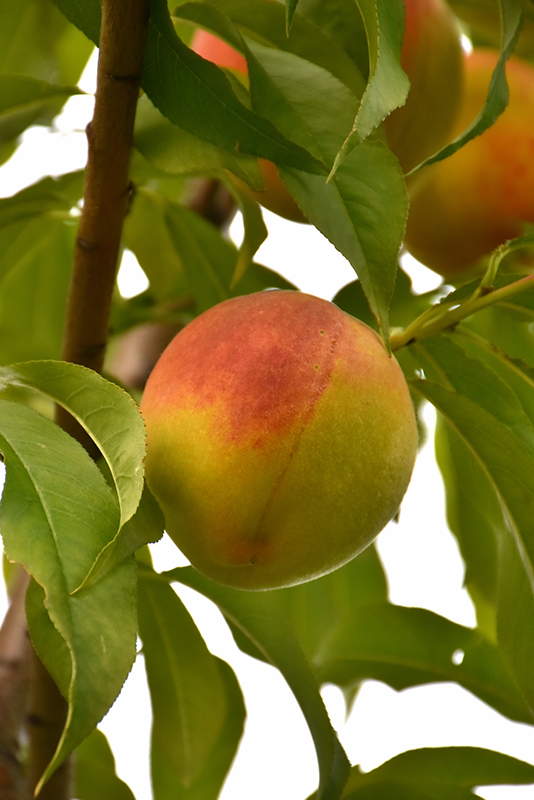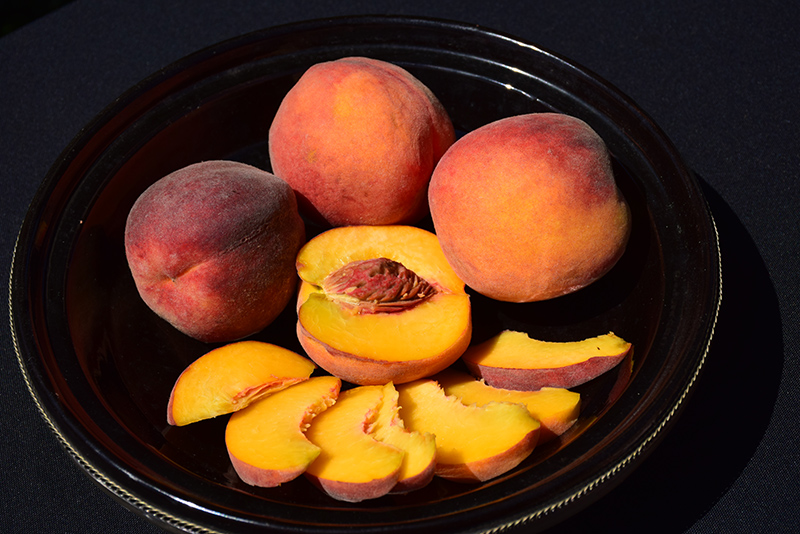>> Home
Height: 15 feet
Spread: 15 feet
Sunlight:
![]()
![]()
Hardiness Zone: 6
Other Names: Common Peach
Group/Class: Stellar® Series
Description:
A popular mid-season fruit tree, with firm and juicy, reddish freestone peaches; ornamental, with showy pink flowers in spring and a low, spreading habit; yellow flesh tinged with coral shows off when canned, frozen, made into preserves or desserts
Edible Qualities
Coralstar® Peach is a small tree that is typically grown for its edible qualities. It produces gold round fruit (technically 'drupes') with a red blush and yellow flesh which are typically harvested when mature. Note that the fruits have hard inedible pits inside which must be removed before eating or processing. The fruits have a sweet taste and a juicy texture.
The fruit are most often used in the following ways:
- Fresh Eating
- Cooking
- Baking
- Preserves
- Canning
Features & Attributes
Coralstar® Peach is covered in stunning clusters of fragrant shell pink flowers along the branches in early spring, which emerge from distinctive rose flower buds before the leaves. It has dark green deciduous foliage. The narrow leaves turn yellow in fall. The fruits are showy gold drupes with a red blush, which are carried in abundance in mid summer. The fruit can be messy if allowed to drop on the lawn or walkways, and may require occasional clean-up.
This is a deciduous tree with a more or less rounded form. Its average texture blends into the landscape, but can be balanced by one or two finer or coarser trees or shrubs for an effective composition. This plant will require occasional maintenance and upkeep, and should only be pruned in summer after the leaves have fully developed, as it may 'bleed' sap if pruned in late winter or early spring. It is a good choice for attracting bees, butterflies and squirrels to your yard. Gardeners should be aware of the following characteristic(s) that may warrant special consideration;
- Insects
- Disease
Aside from its primary use as an edible, Coralstar® Peach is sutiable for the following landscape applications;
- Accent
- General Garden Use
- Orchard/Edible Landscaping
Planting & Growing
Coralstar® Peach will grow to be about 15 feet tall at maturity, with a spread of 15 feet. It has a low canopy with a typical clearance of 2 feet from the ground, and is suitable for planting under power lines. It grows at a medium rate, and under ideal conditions can be expected to live for approximately 30 years. While it is considered to be somewhat self-pollinating, it tends to set heavier quantities of fruit with a different variety of the same species growing nearby.
This tree is typically grown in a designated area of the yard because of its mature size and spread. It does best in full sun to partial shade. It does best in average to evenly moist conditions, but will not tolerate standing water. It is not particular as to soil type or pH. It is somewhat tolerant of urban pollution. This is a selected variety of a species not originally from North America.

